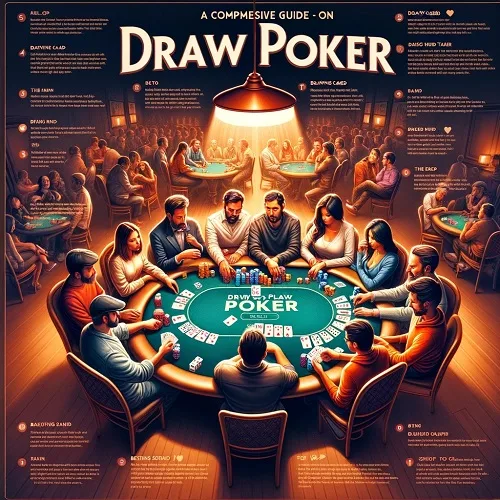
Draw Poker Explained: A Player’s Guide to Success
Delve into the fascinating world of Draw Poker, a game that combines skill, strategy, and a bit of luck. This guide covers everything from its historical roots to essential tips for emerging victorious.
The Origins and Rise of Draw Poker
Draw Poker’s history is as rich and intriguing as the game itself. It first gained popularity in the United States during the 19th century, becoming a staple in saloons and gaming halls. The simplicity of the game, combined with the depth of strategy it allows, made it a favorite among players.
It was in the American Frontier where Draw Poker truly flourished. The game’s ability to blend social interaction with competitive spirit made it an integral part of the culture in the West, where poker was more than a game—it was a way of life.
Where to Find Draw Poker Today
Draw Poker has transcended its humble beginnings to become a fixture in modern casinos around the world. From the glitzy floors of Las Vegas to the digital realms of online casinos, the game continues to attract players of all ages and skill levels.
Online platforms have particularly broadened its reach, offering variations of Draw Poker that cater to both novices and seasoned players. Additionally, private clubs and home games remain popular venues for those seeking a more intimate setting.
Despite its widespread availability, not all casinos offer Draw Poker. It’s often found in larger establishments with diverse gaming options or specialized poker rooms that cater to traditional game enthusiasts.
Understanding Draw Poker: Rules and Gameplay
The essence of Draw Poker is simple: players aim to create the best five-card hand possible. The game begins with an initial deal, followed by a round of betting. Players then have the opportunity to ‘draw’ cards, replacing any number of their cards in hopes of improving their hand.
Betting rounds are pivotal in Draw Poker, allowing players to gauge their opponents’ confidence in their hands. Bluffing plays a crucial role, as players must sometimes convince others of a strong hand when the reality is quite the opposite.
The game can end in several ways, including players folding to a single remaining player or a showdown where the best hand wins. Variations of Draw Poker introduce additional elements like wild cards or specific limits on betting.

Essential Tips for Newcomers
For those new to Draw Poker, understanding basic strategy is crucial. Paying attention to opponents’ behaviors and betting patterns can provide invaluable insights into their hands.
Managing your bankroll and knowing when to fold are also essential skills. The excitement of the draw can tempt players to chase losses or play hands that are better off folded from the start.
A Surge in Popularity
Draw Poker’s popularity saw a significant resurgence in the late 20th and early 21st centuries, thanks in part to televised poker tournaments and the rise of online gaming. This exposure introduced the game to a new generation, cementing its status as a timeless classic.
The advent of online poker has particularly revolutionized how Draw Poker is played and perceived, making it accessible to millions worldwide and fostering a global community of players.
The Competitive Arena: Draw Poker Tournaments
Tournaments have become a pivotal part of the Draw Poker scene, offering players the chance to test their skills against a wider field. These events range from small, local competitions to major international championships with substantial prizes.
The World Series of Poker (WSOP), among other tournaments, has featured Draw Poker, highlighting the game’s enduring appeal and the high level of skill required to succeed at the highest levels.
